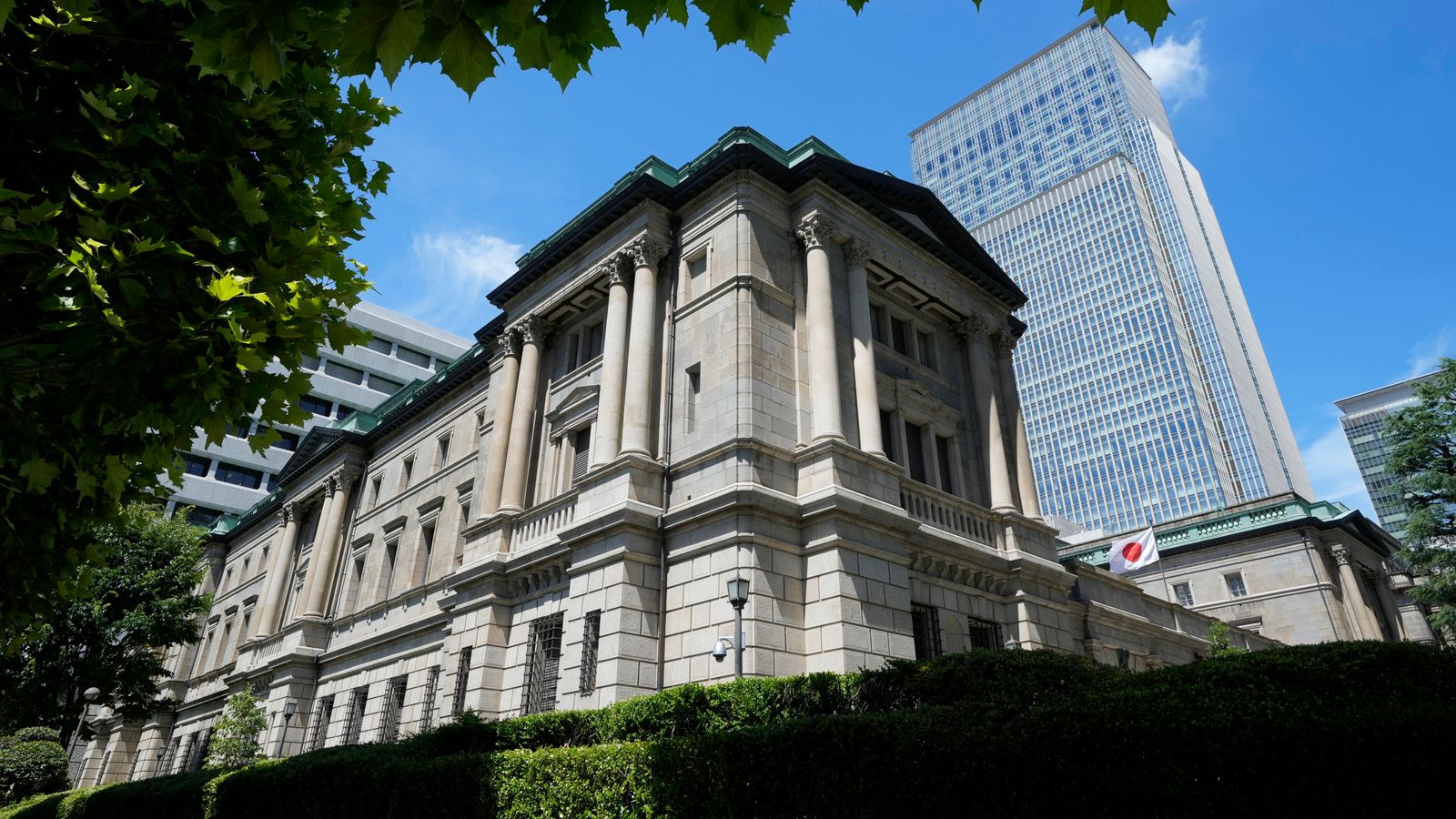Japan’s central bank has signalled progress in its efforts to boost the country’s economy by ending vast swathes of a massive stimulus programme.
Policymakers in the country, which has struggled for decades to achieve price growth to bolster activity, took the decision eight years ago to impose a negative interest rate of -0.1%.
The aim behind it was to encourage spending in the economy rather than saving, with banks even facing charges for some reserves to be parked with the Bank of Japan.
The Bank’s decision to impose a new target rate around zero marked its first interest rate increase in 17 years.
Money latest: The story of olive oil’s 110% price rise – and what to look for in the supermarket
While its economy remains fragile, inflation is running above the Bank’s 2% target, partly aided by healthier wage increases which have been a focus of efforts to end the era of economic malaise.
The negative interest rate policy had combined with other, extraordinary, measures to inject money into the economy and keep borrowing costs low.
National Grid: Nearly £60bn energy grid upgrade needed to hit green target
Money blog: The story of olive oil’s 110% price rise – and what to look for in the supermarket
Car industry insists 2,000% increase in sales to Azerbaijan has nothing to do with Russia
These included so-called yield curve control – a policy that had been in place since 2016 that capped long-term interest rates around zero.
While that was also abandoned, the Bank said it would keep buying “broadly the same amount” of government bonds as before and ramp up purchases in case yields rise rapidly.
Higher yields force up the cost of servicing debt, posing a threat to spending and growth ahead.
The good news for the bank was that the decisions received a muted market reaction, largely because its intentions had been signalled in advance and were expected.
Bank of Japan governor Kazuo Ueda had repeatedly said the bank would review its negative rate and other easing measures if the 2% inflation target was met and accompanied by wage increases.
Its policy path has been quite different to those of western economies, which have been grappling the effects of surging inflation, mostly attributable to Russia’s invasion of Ukraine.
Japan has suffered decades of mostly economic stagnation, leading the manufacturing powerhouse to fall behind Germany to become the world’s fourth-largest economy.
The collapse of a property bubble in 1990 started a period known as the lost decade.
However, a sustained recovery never really materialised despite the efforts of successive governments and the central bank alike.
Structural problems have included massive government debt, weak consumer confidence and low birth rates.
The Bank noted on Tuesday that industrial production remained stagnant due to weak demand overseas, housing investment was relatively weak and government spending was “more or less flat.”
“Concerning risks to the outlook, there are extremely high uncertainties surrounding Japan’s economic activity and prices,” it said, making clear that the stimulus would not be fully withdrawn for some time.
Be the first to get Breaking News
Install the Sky News app for free
The bank said it would continue with government bond purchases at rates that would be guided by economic trends.
“Today’s decision will only lead to a 0.1% increase in short-term interest rates”, the governor told reporters.
“We will also increase bond buying nimbly if there is a sharp rise in long-term rates.
“I don’t think deposits or lending rates will rise sharply from today’s decision.”





